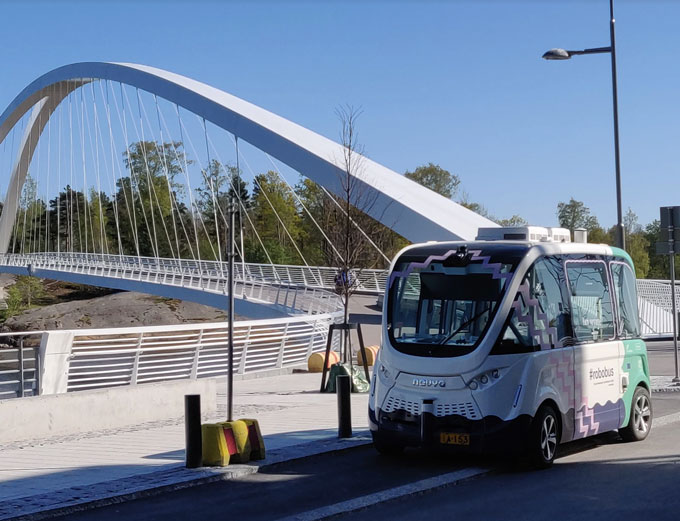Congested streets full of passenger cars are a challenge for growing cities around the world, and Helsinki is looking for means to decrease traffic congestion as well as emissions and other climate impacts caused by motor vehicles.
A key means to influence this is investment in public transportation, but its proportion of traffic has remained almost the same in recent years.
However, self-driving robot buses could increase the popularity and efficiency of public transportation in the future, which is why Helsinki has been testing them for several years.
(Helsinki’s public transportation’s line number 94R is a robot bus. The pilot is helping the implementation of smart traffic in Helsinki. Courtesy of Telia Finland and YouTube. Posted on Nov 15, 2018.)
‘The aim is to use the pilots to learn as much as possible about robot buses even in the early stages of technological development, such as how residents receive them, how they function as a part of public transportation and what they can offer to the mobility of citizens,’ says Jari Honkonen, Project manager at the City of Helsinki’s innovation company Forum Virium Helsinki.
Forum Virium Helsinki is the innovation company of the City of Helsinki, building Helsinki into the most functional smart city in the world in collaboration with companies, the scientific community and residents.
Robot buses can change public transportation significantly
Helsinki is committed to become carbon neutral by 2035 and, in line with this, recognizes that problems associated to traffic and transport need to be tackled.

Therefore, the city has laid down in its official strategy to act as a testbed and to promote new mobility technologies – of which automated demand-driven shuttle buses are a notable example.
By offering residents an emission-free transportation option, robot buses support Helsinki’s goals of carbon neutrality.
“If the robot bus technology develops as expected, they can develop public transportation in a more cost-efficient direction and enhance service levels by expanding its coverage to areas where the lines do not currently reach, making departures more frequent and public transportation more reachable”, added Honkonen.
Helsinki a forerunner in testing self-driving buses
Helsinki is working as an active test platform for pilots of smart traffic solutions, and the City’s strategy also aims to promote smart modes of transport.
As a result, Helsinki has become a world-class test city for robot buses, where increasingly challenging pilots are conducted in various project each bringing new learnings and increasing know-how in Forum Virium Helsinki and the city’s stakeholders.
The forerunner position of Finland is made possible by flexible legislation and the close-cooperation of the public authorities.
(See the Robot bus in Helsinki, in Action! Courtesy of CNN and YouTube. Posted on Aug 18, 2016.)
To support autonomous mobility in the Helsinki region, major stakeholders, Metropolia University of Applied Sciences, the Helsinki city transportation planning division, the Helsinki Regional Transport Authority, and, importantly, the Finnish Transport and Communications Agency Traficom which is in charge of giving out testing permissions, are working closely together.
An important factor for the development of smart mobility solutions has been the EU funding, the projects have received.
Coming up – autonomous buses among traffic without a steward
This year, two robot bus lines operate on the streets of the city. Bus number 26R in Kalasatama started in May and will operate until November.
This is a pilot by the European mySMARTLife project.
Bus number 90R, which started its route recently in June, will take passengers from near the Vuosaari metro station to the Aurinkolahti beach until September.
This pilot is organized by Metropolia University of Applied Sciences and Forum Virium Helsinki and their partners as a part of the Sohjoa Baltic project.
On both routes, the robot bus drives amongst regular traffic and the ride is free of charge for the passengers. The buses will be added to Helsinki’s public transport route planner reittiopas.


















